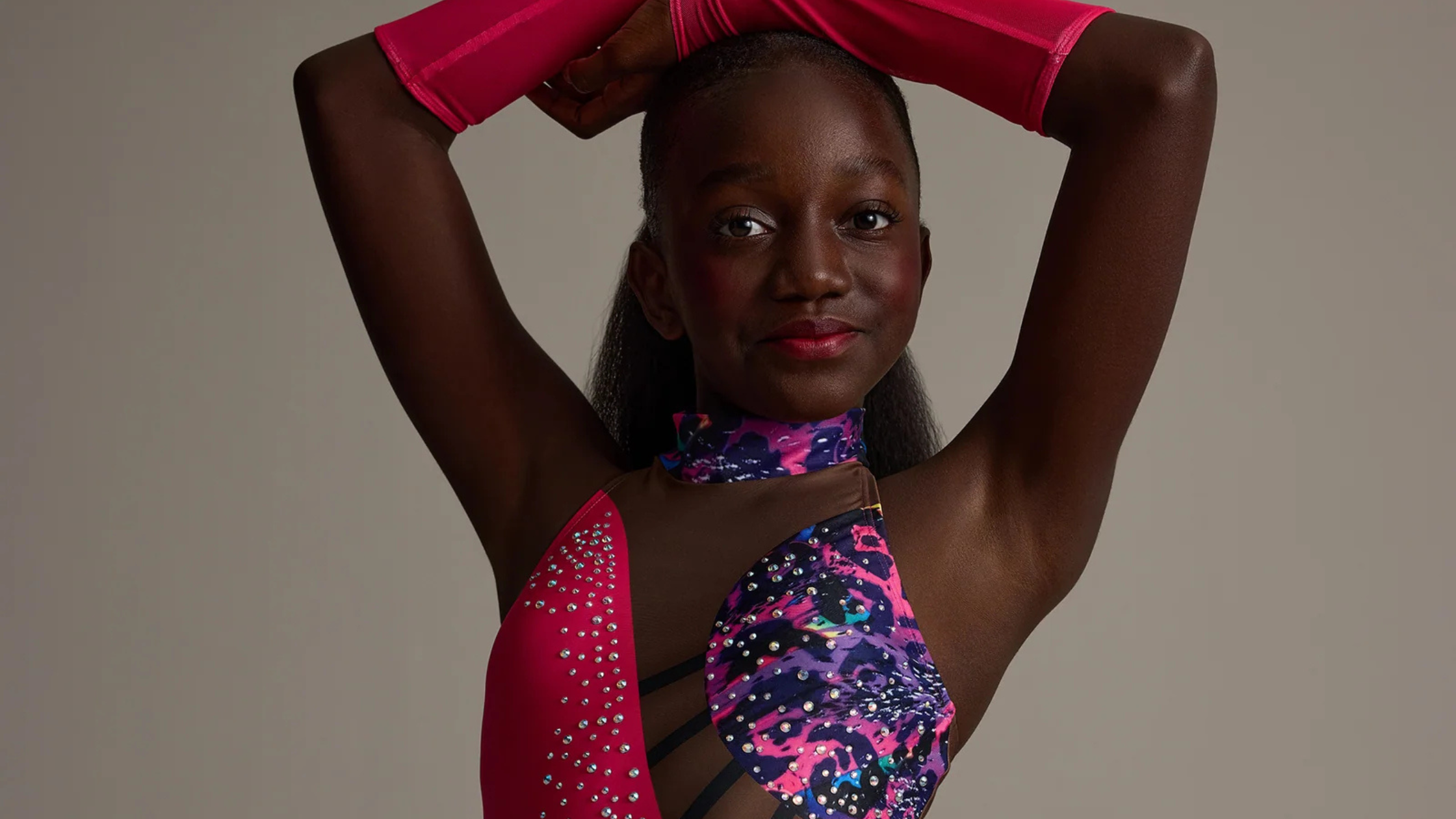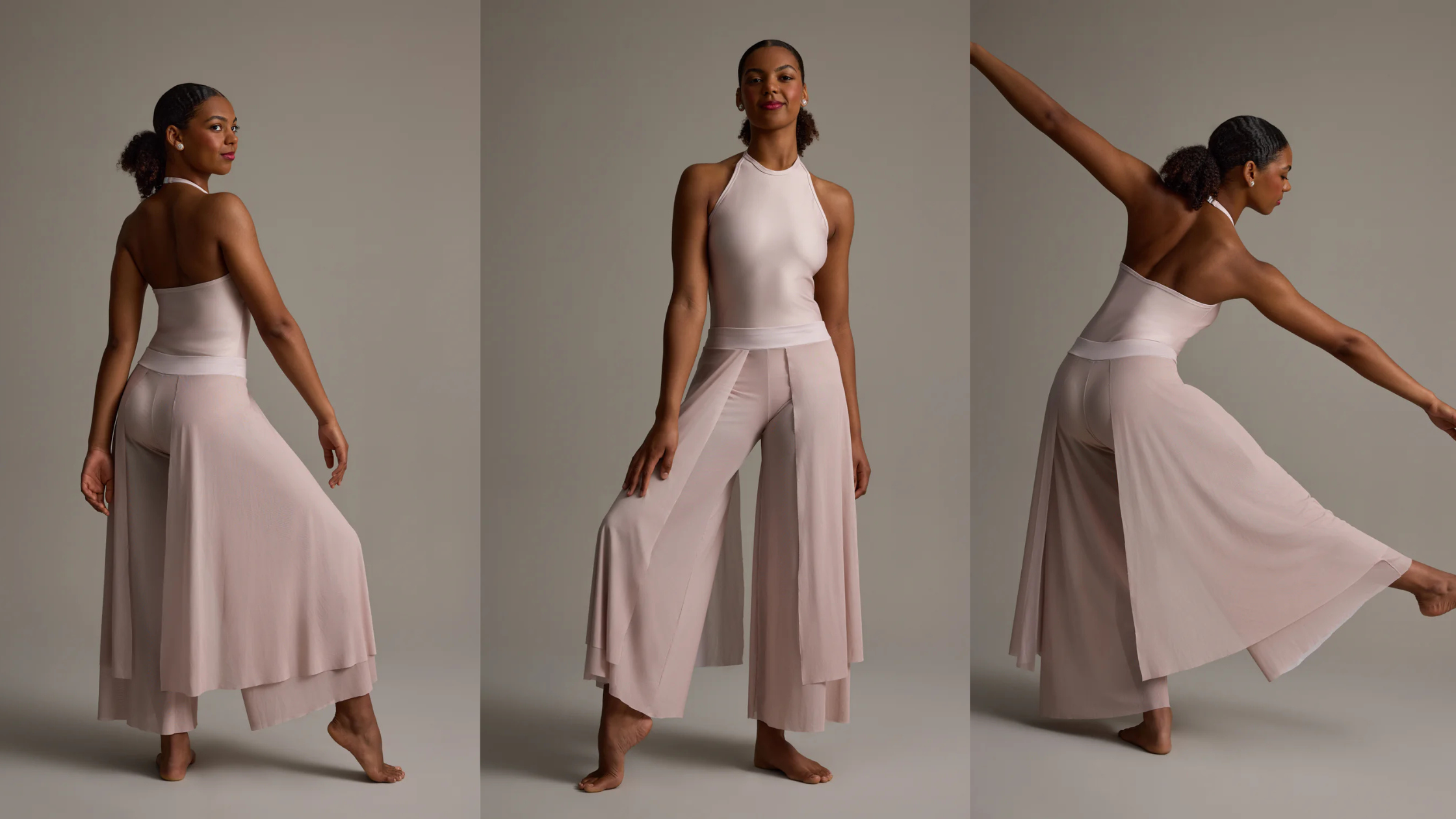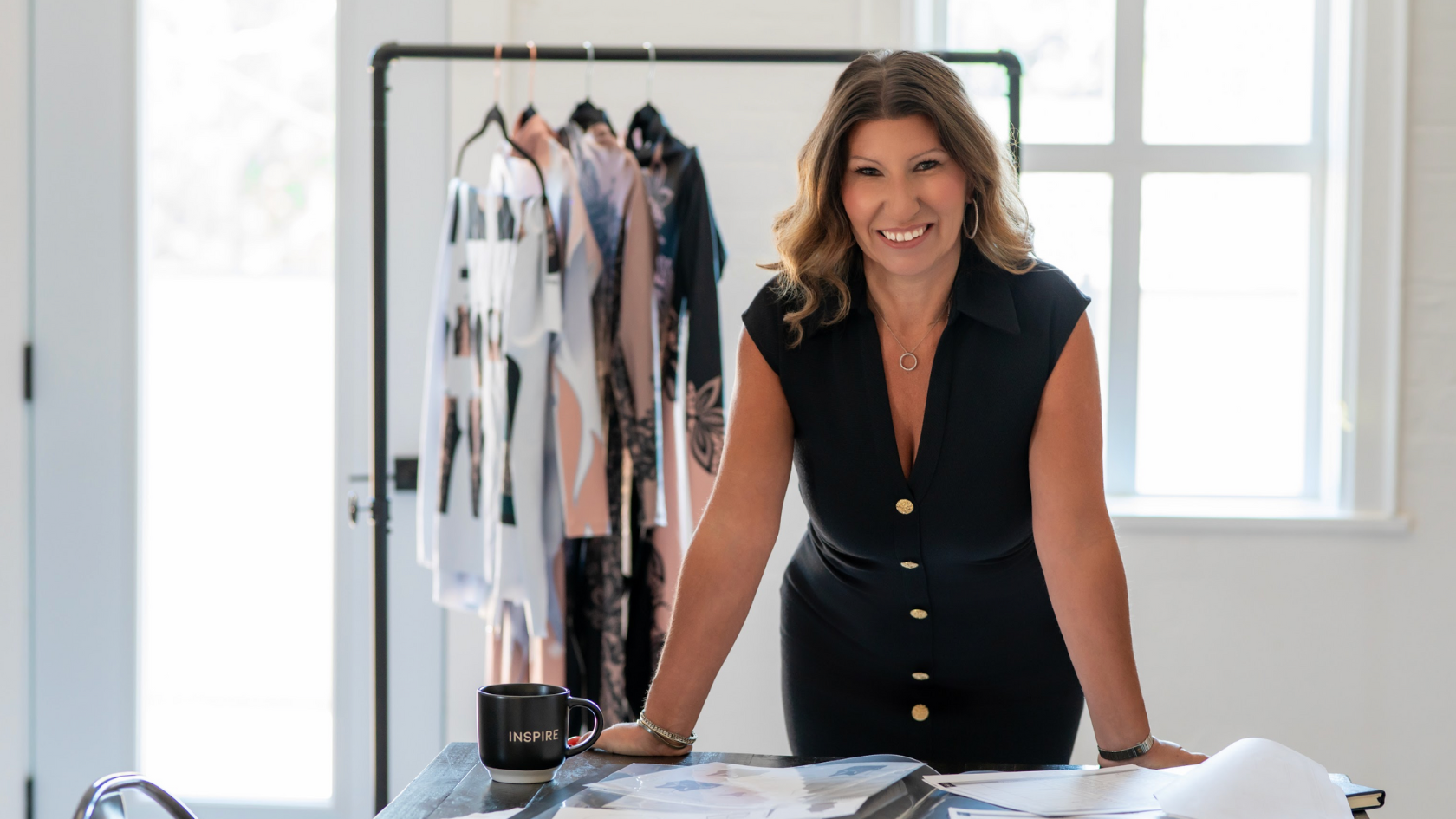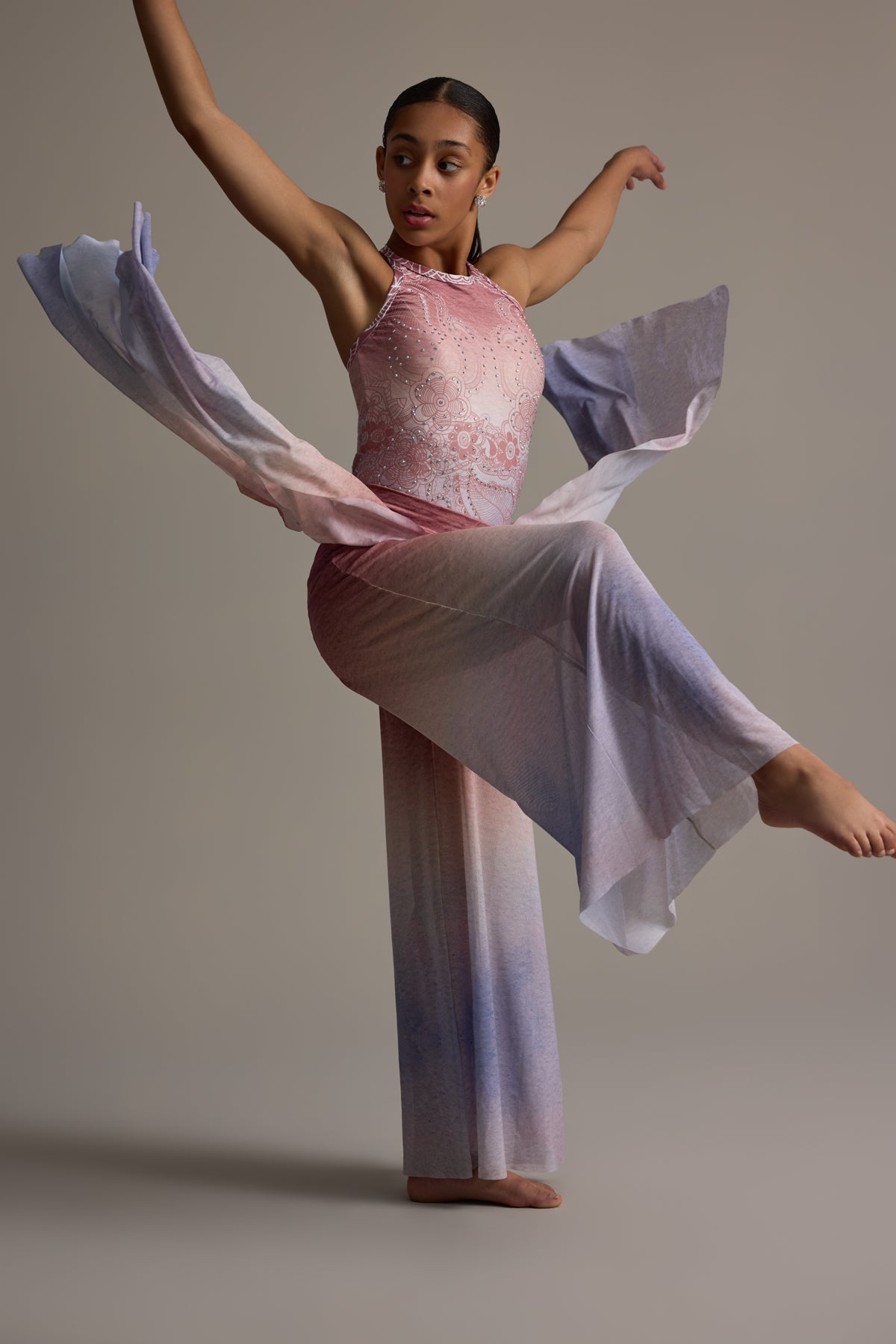If you’ve ever slipped a Limelight costume out of its garment bag and thought, “Wow, this feels different,” you’re not imagining it. That difference is by design—literally. Limelight’s President and Head Designer, Erika, spent more than two decades building and running a custom costume company before channeling that hard-won expertise into Limelight Costumes. She’s fitted thousands of dancers, solved every kind of stage-day wardrobe hiccup, and learned exactly what separates a good costume from a great one.
Today, we’re pulling back the curtain to introduce Erika and share a few of her “fun facts”—the guiding design choices that make Limelight Costumes comfortable, customizable, and performance-ready for real dancers in the real world.
Designing for dancers is a rare mix of art, engineering, and empathy. Choreographers dream up a mood; dancers need freedom to move; directors want a cohesive look; parents want durability; and studio owners need reliability and professional polish. Erika has sat at the center of that conversation for 20+ years. She’s seen teams grow mid-season, solved last-minute fit issues, and worked with performers who have fabric sensitivities or sensory concerns. The result is a design philosophy that puts fit, function, and finish on equal footing.
Below are three core decisions Erika builds into Limelight Costumes—each one aimed at making life easier for studios and more comfortable for dancers.
1) “You Can Always Go Shorter” — Built-In Alteration Flexibility
Here’s a universal truth from the fitting room: you can make a garment shorter; you can’t make it longer. That simple rule guides how Limelight pieces are patterned and cut.
Extra length where it counts
Arms and legs are designed with a touch of extra length. For growing dancers, that tiny bit of give can be the difference between a costume that works for one competition and a costume that carries through the season. For studios, it means fewer 11th-hour scrambles. If you need to hem a sleeve or take up a pant leg, you’ve got room to do it cleanly without fighting for every millimeter.
Confidence for studio owners and parents
When your team spans several ages or growth spurts hit between choreography and recital, those extra centimeters become your best friend. The silhouette stays sleek, but you have the option to customize length to the dancer’s needs without compromising the line or the look.
Practical tips for a clean shorten
-
Fit with shoes on. Check leg length in the footwear your dancers will perform in—jazz shoes, tap shoes and character shoes—so you hem once, correctly.
-
Mark with chalk or clips. Have dancers move through a few counts (lunges, sautés, battements) to see where fabric settles.
-
Preserve the line. If in doubt, take less at first. You can always shorten again after a test run in rehearsal.
2) High-Quality 4-Way Stretch With Outstanding Recovery
If you’ve ever seen a beautiful costume look “tired” by the end of the day—knees bagging, seat sagging—you know fabric selection makes or breaks the stage look. Erika is relentless about materials. Limelight uses premium, 4-way stretch fabrics with excellent recovery so the garment moves with the dancer but springs back to its original shape.
What that means in the studio—and on stage
-
Comfort: The fabric flexes up, down, and diagonally. High kicks, backbends, floorwork—no pulling or pinching.
-
Range of motion: Choreography shouldn’t be edited to accommodate a costume. With true 4-way stretch, dancers can chase full expression without restriction.
-
No baggy “end-of-day” look: That snap-back recovery resists stretching out at the knees, elbows, and seat. Your team looks as sharp in the awards photo as they did in their first entrance.
-
Sensory-friendly considerations: Smooth hand-feel, supple stretch, and careful seam placement create a wear experience that’s kinder for dancers who are sensitive to textures or pressure points.
Built for rehearsal and performance
A great costume shouldn’t need to be treated like glass. Erika selects fabrics that stand up to rehearsal schedules, quick changes, and travel, while maintaining color integrity and surface smoothness. The payoff: fewer distractions and more focus on the performance itself.
3) Rhinestones—Strategically Placed for Tailoring (and Extra Sparkle)
We all love a good stage shimmer. But anyone who’s ever tried to nip a side seam on a heavily stoned bodice knows the panic: snip, and you risk losing a line of stones. Erika’s solution? Keep rhinestones away from seams that are likely to be tailored. That way, you (or your preferred tailor) can adjust without playing a nerve-wracking game of “dodge the crystal.”
Tailor without the tears
By giving high-glitz areas some breathing room from key seams, Limelight minimizes the risk of stones popping or adhesive lines lifting when you alter. It’s a small design tweak with a big impact: quick, clean alterations and a pristine finish.
Your built-in backup plan
Every rhinestoned costume arrives with a small bag of extra stones. Want to amplify the neckline? Fill in a motif? Replace a crystal that went rogue in transit? You’ve got the supplies to personalize and perfect. It’s a thoughtful touch that keeps your costumes stage-ready all season.
Designed for Real Life: The Details You Don’t See (But Definitely Feel)
Beyond those three anchor decisions, Erika’s patterning and construction approach is full of quiet upgrades that show up in comfort and performance confidence.
-
Seam placement with purpose: Seams are mapped to follow the body’s movement lines, helping reduce hot spots and friction.
-
Thoughtful necklines and armholes: Open enough for freedom, secure enough for coverage—because no one wants a costume they have to fuss with mid-routine.
-
Finishings that last: From elastics to linings, components are chosen to balance softness against stability so the costume holds shape over time.
-
Cohesive team silhouettes: Each piece is designed to integrate beautifully across sizes and body types, creating a consistent visual story on stage without forcing a “one-shape-fits-all” fit.
Customization Without Chaos
One of Erika’s trademarks is leaving room for studios to make a look their own—without reinventing the wheel. That’s why the extra length is there, why stones are kept clear of alteration zones, and why the base fabrics are so resilient. You can tune a Limelight costume to your choreography, cast, or concept and still count on it to perform.
Smart ways to personalize
-
Hem for precision: Clean lines at wrists and ankles sharpen musicality and highlight footwork.
-
Add a touch of sparkle: Use the included extra rhinestones to add extra shine or as back up.
-
Style with accessories: From gloves to hairpieces, build accents that match your team identity without overwhelming the costume’s architecture.
Coach-Tested, Dancer-Loved
The better a costume fits and feels, the more dancers can commit to the story they’re telling. Erika’s experience taught her that the most beautiful design isn’t the one with the most embellishment—it’s the one that lets dancers forget what they’re wearing and sink fully into the music. That’s the quiet superpower behind Limelight’s choices:
-
Extra length that solves real problems quickly.
-
High-recovery stretch that keeps the look sharp through rehearsals and repeats.
-
Rhinestone placement that respects the realities of tailoring and team management.
A Designer’s Promise
Erika’s guiding promise is simple: every design choice should serve the dancer. That’s why Limelight Costumes feel secure without being tight, elegant without being fussy, and special without sacrificing practicality. From the first fitting to the final bow, each piece is built to support performance—so teams can focus on artistry, not wardrobe.
Whether you’re outfitting a small group with different growth patterns, accommodating dancers with texture sensitivities, or planning a multi-routine season that demands durability, Limelight’s details are there to help you succeed: extra length you can customize, 4-way stretch with real recovery, and rhinestones placed with alterations in mind—plus a few extras, just in case.
If you’re new to Limelight, consider this your invitation to experience the difference a designer’s eye makes. It’s the kind of craft that doesn’t shout—it simply performs.
Read more

The right costume color can transform your routine. This guide shows how to work with stage lighting, flatter all skin tones, and create high-impact looks using Limelight’s Prima and Elements colle...

When we set out to launch Limelight Costumes, our head designer Erika had a clear goal: make a bold statement and fill the gap between custom couture and catalog convenience. That meant going past ...



